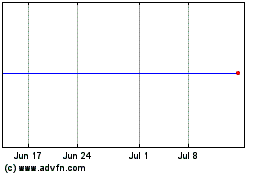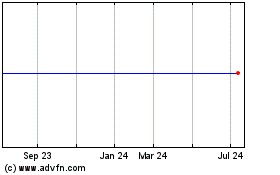By Rachel Pannett
MELBOURNE, Australia--Australia is taking a page from Silicon
Valley's playbook as it seeks to reinvigorate its
resource-dependent economy at the end of a long commodities boom,
placing bets on biotechnology and digital health care.
For years, mineral-rich Australia has lagged behind the U.S. and
other tech-centric economies in converting tech discoveries into
business ventures. Australians produce twice as many citable
research papers per capita as Americans but only half the number of
patents, according to a 2014 report by consulting firm McKinsey
& Co.
That is changing, partly because of tax incentives for research
and development that have aided biotech companies facing years of
costly research and drug trials. Australia ranked fourth globally
for biotechnology innovation last year, up from seventh place in
2013, according to a survey by Scientific American based on
categories including government policy, intellectual property
protection and workforce education. The U.S. is No. 1, followed by
Denmark and New Zealand. Switzerland, home to pharmaceuticals
giants such as Novartis AG, slipped to seventh in 2015 from third
in 2013.
The sector may get a further boost after Malcolm Turnbull, a
successful software entrepreneur and venture capitalist before
turning to politics in 2004, wrested the job of Prime Minister from
Tony Abbott in a Liberal Party coup.
"Mr Turnbull's business acumen along with his knowledge of and
well-known support for the Australian technology sector will
provide him with unique insights into the barriers facing
Australian startups, particularly in terms of accessing venture
capital and talent," said Peter Bradd, chief executive of nonprofit
organization StartupAUS.
In the semi-industrial Melbourne suburb of Abbotsford,
Starpharma Holdings Ltd. recently moved into a building used for
years by Carlton United Breweries to analyze beer. Walls and
parquet floors that evoked beer hops and wheat fields have been
whitewashed, but the whiff of brewing yeast lingers, billowing from
the neighboring brewery's smoke stacks.
Starpharma is creating a unique product by replacing toxic
detergents in off-patent cancer drugs with a synthetic polymer.
Early trials have shown it can target tumors without hurting
healthy tissue. The discovery could eventually allow doctors to
administer around 30 to 40 times the normal dose of the drugs
without side effects such as hair loss, nausea and bone-marrow
damage, according to Starpharma's chief executive, Jackie
Fairley.
The company this month signed a licensing agreement with
U.K.-based drug maker AstraZeneca PLC to commercialize the drug
delivery technology, a deal Ms. Fairley estimates could be worth
around US$450 million to Starpharma for every successful product.
Starpharma was founded on technology originally discovered at the
Biomolecular Research Institute, a joint venture between the
Commonwealth Scientific and Industrial Research Organisation and
the Victorian State Government.
The 18 health-care companies among Australia's 200 largest
stocks had a total market capitalization of roughly 86 billion
Australian dollars (US$60.16 billion) as of Aug. 31, up from A$62
billion in December 2013. The value of the 33 resources companies
included in the top-200 index fell to A$200 billion from A$269
billion over the same period.
Australia is looking to build on that growth through government
investment funding and university programs designed to nurture
entrepreneurs.
Canberra is looking to reduce its reliance on resource exports
as the end nears for a commodities boom that led Australia to ride
one of the longest economic expansions in modern history.
Australia's economy expanded just 0.2% in the second quarter from
the first, the slowest pace in four years. That is pushing the
jobless rate higher even than in the depths of the global financial
crisis.
Federal lawmakers last month approved the creation of a
medical-research fund pledged to reach A$20 billion by 2020. Still,
Australia faces an uphill struggle to catch up with the U.S., where
the government contributes tens of billions toward medical research
each year. The Australian fund will pay out just A$10 million in
its first year and even at its peak will distribute only about A$1
billion a year.
Australian universities are also getting on board, upending what
had been Australia's traditional college model of prioritizing
published research above efforts to commercialize discoveries.
Three years ago, the University of Melbourne launched the
Melbourne Accelerator Program, offering startup firms A$20,000 in
seed funding, along with free office space and mentoring. Next year
it will launch a master of entrepreneurship, modeled on similar
programs at U.S. universities such as Stanford University and
Massachusetts Institute of Technology, aiming to give budding young
businesspeople the mentoring they need to survive the startup
years. Among the most promising areas are medical technologies.
"I can see biotech and medical tech really transforming
Australia," says Michelle Gallaher, who has spent the past two
decades working with biotech startups and pharmaceutical companies.
Australia's distance from the rest of the world is a potential
asset to budding entrepreneurs, she says: "If we can survive in our
own pond with very little money, we come out quite strong."
Still, the risks are high. Fewer than 5% of Australian startups
succeed, compared with 8% in Silicon Valley, according to Rufus
Black, a former partner at McKinsey & Co. and current master of
the University of Melbourne's Ormond College, which is
collaborating on the new entrepreneurship degree.
In a sign of the sector's promise, Fibrotech Therapeutics--a
drug company developing scar-tissue therapy based on University of
Melbourne research--was sold to Irish pharmaceutical company Shire
PLC last year for US$75 million. The deal value will rise to about
US$1 billion once the drug is approved and additional incentive
payments are made, making it one of Australia's biggest-ever
biotech transactions.
Darren Kelly, a Fibrotech founder, says when he launched the
company nearly a decade ago his university colleagues told him he
was committing "career suicide" by going into business. "We were
trained to be in the lab every day, pipetting away," says the
45-year-old Mr. Kelly, wearing a dapper gray business suit at the
board table of the office where OccuRx, a biotech company he spun
out of Fibrotech before it was sold, is based.
Write to Rachel Pannett at rachel.pannett@wsj.com
Subscribe to WSJ: http://online.wsj.com?mod=djnwires
(END) Dow Jones Newswires
September 15, 2015 15:44 ET (19:44 GMT)
Copyright (c) 2015 Dow Jones & Company, Inc.
AstraZeneca (NYSE:AZN)
Historical Stock Chart
From Mar 2024 to Apr 2024

AstraZeneca (NYSE:AZN)
Historical Stock Chart
From Apr 2023 to Apr 2024
